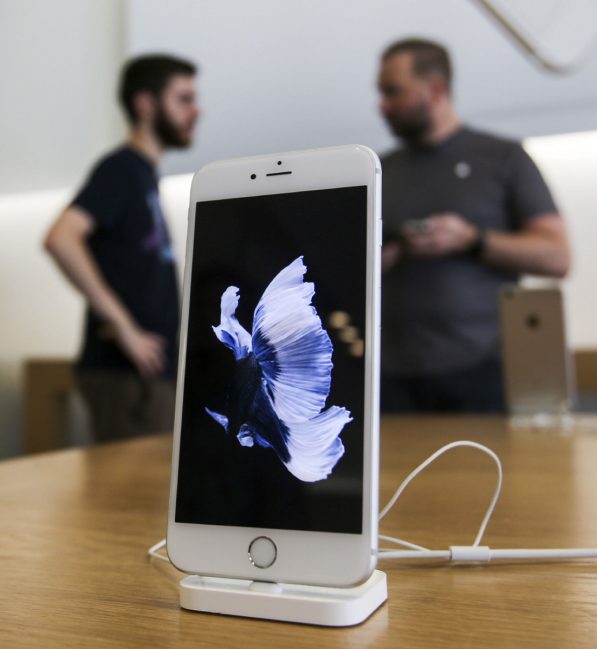Why are Tech Companies Making it so Hard to Upgrade?

What’s worse, a phone that gets “bricked” by a software update, or one that has a tendency to spontaneously combust?
Right now, those are your options from the world’s top two smartphone manufacturers, and it points to a bigger problem — many electronics manufacturers are delivering muddled products and even worse messages, making it difficult for consumers to upgrade. Consider:
<bullet>On Tuesday, Apple released iOS 10, an update to its operating system that immediately started seizing up people’s smartphones. The company quickly released a fix, but not before plenty of outrage.
- Samsung’s latest phone, the Galaxy Note 7, is a potential fire hazard that’s become a pariah in airplanes, subways and anywhere else fires aren’t welcome.
- The new iPhone 7 hits stores on Friday, and thanks to the company’s “courage,” it’s missing a key piece of technology — the headphone jack — that makes it less consumer friendly than the previous model.
- Sony is releasing a new video game console Friday, which is usually cause for rejoicing. But the PS4 Slim offers little more that’s new than a slight cosmetic change. Oh, and the company has a much more powerful console, the PS4 Pro, coming in two months. And it’s PlayStation VR headset comes out next month. I already pity the parents who have to walk into a gaming store in November with directions to buy Sony’s latest.
With the onslaught of new products, it should feel like gadget-geek Christmas. But the fumbles and anti-consumer moves make even the true early adopter stop and think about shelling out. We’ve become so dependent on technology, and yet it is failing all around us. Let’s go through some of the reasons:
The sped up, slowed-down cycle
We just lived through an impressive decade of smartphone improvement and innovation. But now, upgrades tend to feature smaller changes and improvements as opposed to whole new products. Apple, for example, is moving to a three-year upgrade cycle from two years, so the company is carefully doling out new features.
“The iPhone 7 is a nice phone, it does have some nice improvements, but it really is incremental. So if you were going to buy a new iPhone, you’ll buy this one. But if you weren’t, this won’t convince you,” says Bob O’Donnell, president of Technalysis Research. “They spent a lot of time (at their launch event) justifying the removal of the headphone jack, and at the end of the day, I think a lot of people are going to find that annoying. Even though they include the dongle with it, they are going to lose those, and they are going to be frustrated.”
Apple tied the new phone with the launch of iOS10, a software update which would hopefully make older iPhones feel like new. Even with a three-month-long beta to work out the kinks, it still launched and promptly bricked an unknown number of phones, prompting online outrage. The company issued a fix, although many users are rightfully gun shy about installing it.
With Samsung, the company has engineered its production capabilities to fully take on Apple, and its Note 7 beat the iPhone 7 to market. But due to a full-scale recall, the company is facing lost billions to fix the issue, plus lost sales and brand value.
Expanding product lines
With the iPhone 7 and 7 Plus being only slightly better than the 6S and 6S Plus, and with those older models remaining on sale, many consumers could save a few bucks by buying the older model. With two versions of their flagship consoles, both Sony and Microsoft have a lower-priced game-console option available for the holiday season.
The result? Even for people who actively follow the industry, things have gotten confusing. The average consumer must be totally befuddled and possibly worried about making the wrong purchase.
But manufacturers like to point to a slightly cheaper option to goose sales — the iPhone SE, which was released last year, has done very well sales wise for Apple. The bigger problem is that most companies are fumbling their sales pitches. Perhaps because the improvements are too small, or targeted at very specific consumers, it’s hard to create a compelling reason to buy their latest and greatest things.
In the case of Samsung, such muddled messaging is potentially dangerous. The company has not been particularly clear about what to do with the Note 7. This week, after its recall alert, the company said it was issuing an update for the phone that would limit the battery’s charge to only 60 per cent, apparently to make it less prone to combust. So, should consumers use their Note 7 or not?
Is newer always better? That’s the idea that we have long been living under in this age of technology. Although the lesson right now is that the real winners are the late adopters. If you haven’t bought a new console, it’s best to wait until both more powerful versions are out and you can compare. If you haven’t updated to the new version of iOS, it’s best to wait to make sure there aren’t any more hiccups.








